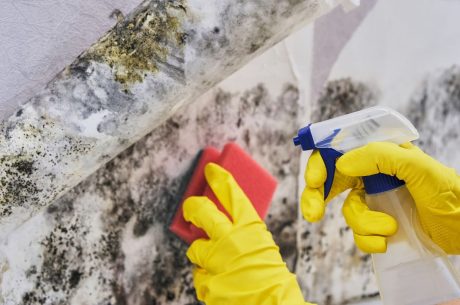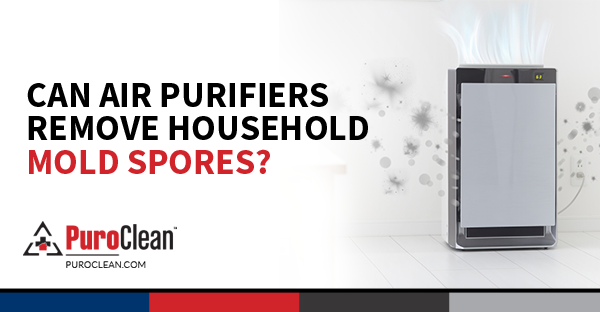You scrub it off, spray disinfectant, and breathe a sigh of relief, only to find mold creeping back weeks later. It’s frustrating, unsettling, and often feels like a never-ending battle. For many McLean homeowners, this cycle becomes a constant concern. But the real question isn’t how to clean it better, it’s why it keeps coming back. Understanding what’s happening behind your walls and beneath the surface is the key to finally breaking free from recurring mold problems.
The Hidden Truth Behind Mold’s Return
Mold is more than just a surface stain; it’s a living organism that thrives in hidden spaces. When homeowners clean mold, they usually target what they can see. However, mold colonies often exist deeper within porous materials such as drywall, wood, or carpet padding. Even after cleaning, microscopic spores remain and spread again once the conditions are right.
For homes in McLean, where humidity and temperature fluctuate throughout the year, these conditions are nearly perfect for mold to flourish. The real culprit isn’t the lack of effort; it’s the lack of awareness of what mold needs to survive. Once you understand the science behind it, you can finally stop the cycle of recurring mold problems at its source.
Why Cleaning Alone Doesn’t Solve Recurring Mold Problems
It’s easy to assume that once mold disappears from sight, the issue is solved. Unfortunately, most household cleaning methods only remove visible mold, not the invisible spores embedded within materials or floating in the air. Mold thrives in damp, oxygen-rich environments, and standard cleaning products can’t penetrate deep enough to reach those hidden colonies.
Even when you wipe down surfaces with strong chemicals, spores can reattach once moisture returns. Over time, these spores spread to other areas, creating new patches of growth. As the U.S. Environmental Protection Agency notes in “Ten Things You Should Know About Mold,” mold can remain hidden and regrow whenever dampness persists. This is why McLean homeowners often experience recurring mold problems, even after several rounds of cleaning.
The McLean Climate Factor: Why Local Homes Are Prone to Recurring Mold Problems
McLean’s weather plays a huge role in persistent mold issues. The region’s humid summers and chilly, damp winters create an ideal breeding environment. Basements and crawl spaces, common in many McLean homes, are particularly vulnerable because of poor ventilation and trapped moisture.
The mix of seasonal humidity and temperature changes often causes condensation inside walls or on windows. Even small amounts of moisture can awaken dormant spores, leading to recurring mold problems before homeowners even realize it. Without addressing the specific climate challenges of McLean, mold will always find a way back, no matter how clean the surface appears.
What Really Causes Recurring Mold Problems
Behind every mold outbreak lies a combination of moisture, warmth, and organic material. Cleaning only handles one symptom of a larger issue. To truly solve the problem, homeowners must identify the unseen factors feeding mold growth within their living spaces.
The Invisible Moisture Problem
Moisture is the lifeline of mold. It hides in plumbing leaks, condensation on windows, or under floors where humidity lingers. Even small, unnoticed drips can cause mold to flourish over time. Many homeowners in McLean underestimate how much moisture their HVAC systems or bathrooms release into the air daily.
When that moisture isn’t properly ventilated, it leads straight back to recurring mold problems. As noted in our blog on mold after water damage, water exposure can make hidden mold spread even faster. Using dehumidifiers and ensuring adequate airflow can help control the hidden humidity that keeps mold alive.
The Myth of Bleach and Over-the-Counter Cleaners
Bleach and store-bought cleaners promise quick results, but they rarely deliver long-term solutions. While bleach can lighten mold stains on non-porous surfaces, it doesn’t eliminate the spores beneath the surface. In fact, bleach’s water content can sometimes increase surface moisture, giving mold another chance to grow back stronger.
This misunderstanding causes many McLean homeowners to fall into a repetitive cycle, cleaning, seeing improvement, and then facing the same issue again. The truth is, without addressing the moisture source and the root cause, recurring mold problems will always return, regardless of how often you clean.
Structural and Lifestyle Habits That Encourage Mold
Sometimes, mold thrives not because of leaks or floods, but because of everyday routines. Hanging damp laundry indoors, keeping windows closed year-round, or overwatering indoor plants can raise indoor humidity. Even modern energy-efficient homes, with their tight seals and limited airflow, can trap moisture instead of letting it escape.
Add structural factors like inadequate insulation, poor basement waterproofing, and neglected ventilation ducts, and you have the perfect recipe for mold to keep reappearing. Recognizing these small yet impactful factors helps homeowners not only clean mold effectively but also prevent mold regrowth naturally.

How to Stop Mold from Returning for Good
The key to ending mold issues permanently is to combine professional expertise with consistent prevention habits. Treating the symptoms will only delay the next outbreak. You need a targeted, long-term approach that removes the root cause, controls moisture, and ensures mold has no environment to thrive in again.
Professional Detection and Targeted Treatment
Professional mold remediation goes beyond cleaning. Experts use tools like moisture meters and infrared cameras to locate hidden damp spots behind walls or beneath floors. Once identified, these areas are treated with specialized antimicrobial solutions that kill mold at its source and prevent it from coming back.
Local professionals familiar with McLean’s environmental patterns understand where mold hides most often and can design custom solutions for lasting results. Their process not only eliminates recurring mold problems but also strengthens your home’s resistance to future outbreaks.
Smart Home Practices to Prevent Mold Regrowth
After professional treatment, the focus should shift to long-term prevention. Regularly monitoring humidity levels, repairing leaks promptly, and maintaining proper ventilation are crucial steps. Installing exhaust fans in bathrooms and kitchens, using dehumidifiers in basements, and checking for condensation around windows can go a long way in preventing mold regrowth.
Choosing mold-resistant materials like waterproof drywall or treated wood also adds a layer of protection. Smart home technology, like air quality sensors and automatic humidity regulators, can help you track changes in moisture levels before they lead to a problem. With these measures in place, McLean homeowners can finally break the cycle and enjoy a mold-free home.
Conclusion
The constant return of mold isn’t just a cleaning issue; it’s a moisture and maintenance issue. The real battle lies in understanding how mold behaves, where it hides, and what allows it to regrow. For McLean homeowners, local weather and home design often make mold control more challenging.
By focusing on professional inspection, moisture control, and consistent upkeep, you can stop recurring mold problems from disrupting your home again. Instead of reacting to mold when it appears, take proactive steps that prevent mold regrowth permanently. With the right approach, you can finally end the frustrating cycle and breathe easier in a cleaner, healthier home.
FAQs
Q1. Why does mold keep coming back even after I clean it?
A: Because cleaning usually removes only surface mold, not the hidden spores or moisture beneath. Unless the root cause of humidity or leaks is fixed, recurring mold problems will continue.
Q2. What is the best way to prevent mold regrowth in McLean homes?
A2: Control indoor moisture. Use dehumidifiers, improve ventilation, and seal potential leaks. These steps help prevent mold regrowth in McLean’s humid climate.
Q3. Should I call a professional if I have recurring mold problems?
A: Yes. Professionals can detect hidden moisture sources, treat affected areas safely, and stop recurring mold problems from coming back for good.



